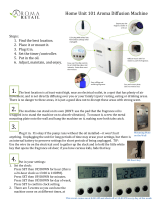
18
Instruments
Indicators
Service indicator
This adjusts the service interval based on the
vehicle usage.
Operation
For a few seconds after the ignition is switched
on, the spanner indicating a service operation
comes on. The distance recorder display line
indicates the distance remaining before the
next service is due (rounded up by default).
The service due dates are calculated from the
last reset of the service indicator.
The due date is determined based on two
parameters:
-
the total distance travelled,
-
the time since the last service.
The distance remaining may be weighted
by the time factor, depending on the type
of driving.
More than 1,000 miles/km remain
before the next service is due
Example: there are 4,800 miles/km remaining
before the next service is due. For a few
seconds after the ignition is switched on, the
screen indicates:
Less than 1,000 miles/km remain
before the next service is due
Each time the ignition is switched on and for a
few seconds, the spanner symbol flashes and
the distance remaining is displayed:
Service overdue
Each time the ignition is
switched on and for a few
seconds, the spanner symbol
flashes and the excess
distance travelled is displayed.
With the engine running, the spanner symbol
remains on until the service has been performed.
For BlueHDi Diesel versions, this alert is also
accompanied by the continuous illumination of
the Service warning lamp when the ignition is
switched on.
For BlueHDi Diesel versions, the spanner
can also come on early, according to the
degree of deterioration of the engine oil.
The degree of deterioration of the engine
oil depends on the driving conditions in
which the vehicle is used.
A few seconds after the ignition is switched
on, the oil level is displayed, depending on
the version, and then the distance recorder
resumes its normal operation, indicating the
total and trip distances.
A few seconds after the ignition is switched
on, the oil level is displayed, depending on
the version, and then the distance recorder
resumes its normal operation. The spanner
symbol remains on as a reminder that a service
is required soon.
Zero reset
Your CITROËN dealer or a qualified workshop
will perform this operation after each service.
If you carry out the servicing of your vehicle
yourself, the reset procedure is as follows:
F switch off the ignition,
https://www.automotive-manuals.net/





















